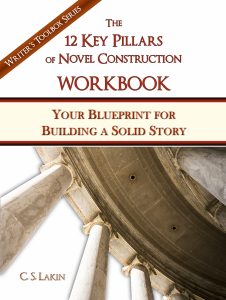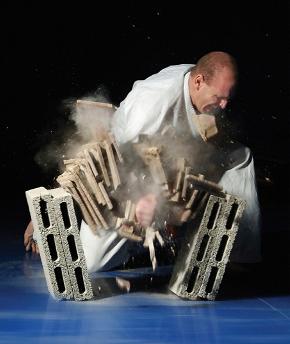A Look at Plot Twists and Smoking Guns
You now have the first ten key scene types presented to you. If you missed the last few Monday posts introducing my 10-20-30 scene builder concept, catch up. These are the ten basic scenes with which you can lay a foundation for most any novel.
Last week I gave you your new chart that has the ten foundational scenes listed and the approximate position they take up in your story. Print it out; use it. You can’t go wrong if you start with these ten scenes when laying out your novel.
I say “approximate” because every novel is a bit different, and while I’m a stickler for structural rules, I also wholly believe you need flexibility and room for originality. My novels often veer into crazy when it comes to structure, but I make sure those foundational scenes and events are in there.
One person wrote and asked me why I didn’t have Turning Point #2 (the 25% mark where the goal is established for the protagonist) as one of the ten key scenes. Reason: that turning point isn’t necessarily one specific scene. It marks the place in the story when the protagonist has the goal fixed. But that situation might be the result of a few scenes in that section of a novel. Again, allow for flexibility. This is just a frame for your story.
Shape Can Vary, but You Need Strong Framework
Some of my novels’ shapes may look a bit wonky, like houses with strange extensions poking out of the second floor or an unusual alcove off the roof, but I keep within those “building codes” that will ensure my structure will stand up to the hard winds of scrutiny and the ravages of time.
See, here’s the thing I keep trying to emphasize: sticking to time-tested structure doesn’t limit you or cramp your style. It provides the framework for limitless creativity that holds the best potential for a great story.
Just think of a piano with eighty-eight keys. There are a limited number of notes a composer has to work with, but within that keyboard lies the potential for an endless diversity of compositions.
At some point you are going to have to stop bucking the system. It works. Give it a try if you don’t believe me.
So, what I’m leading up to is this: while those ten key scene types are a kind of no-brainer when it comes to novel structure (though my organization of it may vary a bit from other writing instructors), the next ten scenes can really vary. That’s where the unique architectural style of your structure is going to come into play.
The more I thought about trying to come up with ten very specific scene types and placement for the next ten key scenes, the more ideas sprouted out of my head. With each major genre I thought about, I came up with a different ten scene types.
I’ll share a few of these variations over the next few weeks, and my hope is that, rather than give you a paint-by-numbers chart to create a formulaic novel, these various suggestions will get your brain simmering with your own scene ideas.
Layering Is the Key
The key here is in the layering. I’ve been doing this kind of layered plotting for years. Probably with most, if not all, my sixteen novels. But I’d never consciously noticed it or thought about it in this way—not until I started playing with this 10-20-30 scene builder idea.
I always start out with the basic key scenes—setup, inciting incident, big moment of opposition, dark night moment, climax, ending—and then I start filling in the pebbles alongside the rocks in the jar.
 I always assumed most writers did similarly, but after years of editing and critiquing, I’m thinking not. I get the feeling that most writers, especially beginning ones, get that cool idea for their novel and hurry through creating a cast of random characters, then set them off on their merry way doing some fun or scary or challenging things without much thought about the framework of their novel.
I always assumed most writers did similarly, but after years of editing and critiquing, I’m thinking not. I get the feeling that most writers, especially beginning ones, get that cool idea for their novel and hurry through creating a cast of random characters, then set them off on their merry way doing some fun or scary or challenging things without much thought about the framework of their novel.
Way too many novels I critique seem directionless, pointless, purposeless. And I bet you can guess—they aren’t all that engaging to read. Without that key character pursuing a short-term goal amid clear opposition and high stakes, there just isn’t much of a story.
Seriously, if you don’t get all this, and if you aren’t already entrenched in this solid structure, get my 12 Key Pillars of Novel Construction and the workbook. Answer all the brainstorming questions and checklist questions in the workbook and get this structure stuff under your belt.
Let’s Talk about Twists
Okay, since you’ve noticed that in the first ten scenes there are two twists (#4 and #7 in the chart), I want to talk a bit about twists and reversals. I doubt many writers think hard about twists they are going to put in their novels, but they’re important.
Call them what you will, but a twist is basically what it sounds like. It’s a shift in movement. When you twist your body, you turn in a different direction. A plot twist is going to take the current direction of the story into a new, perhaps unexpected direction.
Twists can occur in many places in your novel. The inciting incident, in a way, can be a twist because it’s that first moment that shifts your protagonist in a new direction, presenting a new opportunity. However, it might just be a situation that prompts the character to get moving—following that action-reaction behavior—rather than an actual twist.
 Twists, by nature, are unexpected. When Charlton Heston’s character at the end of the original Planet of the Apes movie sees the half-buried Statue of Liberty in the sand, that’s a strong twist. It’s wholly unexpected, revealing to him and the audience that he is on Earth instead of some strange planet.
Twists, by nature, are unexpected. When Charlton Heston’s character at the end of the original Planet of the Apes movie sees the half-buried Statue of Liberty in the sand, that’s a strong twist. It’s wholly unexpected, revealing to him and the audience that he is on Earth instead of some strange planet.
When Bruce Willis’s character in The Sixth Sense realizes he’s dead, that’s a great twist. It’s not just a surprise—because twists are more than that. It’s a game changer for the story and what follows in the plot.
Twists, though, don’t have to be monumental. In most stories they are going to be small but significant to your characters. They may impact the protagonist primarily, but you can have twists that alter the courses of secondary characters as well.
With thrillers you may have a dozen small twists and turns that create setbacks for your main character as he pursues his goal. Those twists are the obstacles that keep popping up and forcing the character to steer around, jump over, or plow through to keep making progress.
Red Herrings
Or you might have red herrings thrown in to throw a character (and reader) off track.
In The Da Vinci Code, we see the protagonist, Robert Langdon, certain that Bishop Aringorosa is the one killing people to find the Holy Grail. This belief distracts both Robert and the reader from the unexpected mastermind of the plot: Sir Leigh Teabing, the frail old man and mentor of the hero.
Red herrings are great elements that create twists, but too many of them can muddle a plot and create lack of focus. But one of your key twists in your novel could be a red herring—if it fits your genre.
Unreliable Narrator and Smoking Guns
A plot twist could be the result of an unreliable narrator. I found Gone Girl, while highly disturbing, impressive due to the twist created by the unreliable (read: flagrant liar and psychopath!) female lead in the story. You are way into the book by the time you learn the cold, scary truth about Amy Dunne.
And while plot twists need to be surprising, they should be properly set up. Meaning, if you are going to have that “smoking gun” show up late in the story, you need to show a hint of it early on. (Anton Chekov said, “One must never place a loaded rifle on the stage if it isn’t going to go off. It’s wrong to make promises you don’t mean to keep.”)
Don’t Forget to Properly Set Up Your Twists
Think about including one or two strong twists in your story, but be sure to set them up. All the clues are there to show that Dr. Crowe in The Sixth Sense is dead—young Cole tells him directly: “I see dead people” as he’s looking right at Crowe. The best twists are the ones that cause readers to say, “Oh, I should have seen that coming!” But of course, you don’t want your reader to see it coming. You want that twist to hit her smack on the head. But if you hint enough earlier, the payoff is fantastic.
Which is what makes Turow’s breakout novel Presumed Innocent so terrific. Turow gives so many great clues to indicate who murdered Carolyn Pohemus—and the murderer is a huge surprise—that when you finally, in the end, learn who that is, you realize it was obvious. Yet, both readers and characters in the story are absolutely blindsided by this revelation.
We’ll talk a bit more next week about plot twists and how to create them. For now, share your favorite novel or movie twist, and indicate how the twist was set up well!












in my first novel, Tessa, there is a mysterious character—”Mrs. Trent, I know your secret.” i was happily writing along, my MC in the dark as to who it was. and i realized i had not thrown any red herrings in! i did not want my readers to know too easily who was making the calls and sending the text messages and emails—or why!suddenly, a couple of otherwise extraneous characters became suspect!
i love Agatha Christie, love her twists—and her red herrings!
Me too! In fact, reading Agatha Christie was my inspiration for writing mysteries. The biggest and best plot twist of all was in The Murder of Roger Ackroyd. Only Agatha could have pulled this off successfully! 🙂
Nice article. It’s a great spot to find new information. Thank you so much for this wonderful post.
You gave wonderful twist examples. Thank you so much for this informative post. I’m an Agatha Christie fan as well. Read ALL her mysteries. LOVE them. I understand the reason for setup in writing. The reader needs to be able to go back and see that the writer did play fair with him. The answer’s there. We just need to bury it and sprinkle it with herrings. Thanks for the post. I’ve shared this one too online.
This article again reinforces to me that careful planning must go into believable twists. No pantser is going to just come up with a great twist on the fly.
One of the greatest twists I’ve read (and since we’re talking about Agatha Christie) is in “And Then There Were None.” It should be obvious that everyone on the island dies (even the title says as much), but then what an amazing twist that everyone is assumed dead but then not so fast…I can heard Agatha chuckling as she planned this part.